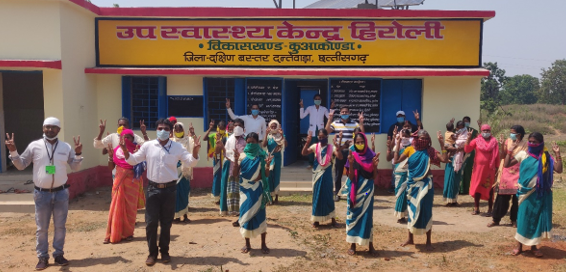Working together at local level makes all the difference
In the public sector, a sub-health centre (SHC) is the most peripheral
and first contact point between the primary health care system and the community. As per the population norms, one sub-centre is established for every 3000 population in hilly, tribal or desert areas. The efficiency of health care system is also affected
by the ability of the community to participate in designing and implementing the delivery of health services. Empowering them by giving them this opportunity ensures improved access, accountability, and transparency.

This SHC in village Hiroli in Dantewada district of Chhattisgarh was established in the year 2000. It was located in one room of the Indian Postal Service office in the area and was used as an emergency labor room. However, due to financial limitations, limited supervision and lack of resources, it was unable to deliver adequate services to people in the area. Often, health workers could do little more than give medicines living in the immediate vicinity or deliver a baby in case of an emergency.
To make it functional in May 2020, it required strong collaboration between the district administration with Village Health Sanitation and Nutrition Committee and the frontline workers like Auxiliary nurse midwives (ANMs), Multipurpose Workers (MPWs) and Accredited Social Health Activist (ASHAs). A new location was identified for the SHC and renovated. The set of services now include availability of essential drugs, In-Patient Department (IPD) services, a fully functional labor room, a small laboratory providing hemoglobin, malaria, blood sugar and other primary tests. The SHC caters to approximately 3106 people living across four villages. This success of reopening SHC Hiroli shows that working together to find solutions is key to inclusive and sustainable development at both national and local levels. It is essential in improving the quality of life of the people living in remote tribal areas, reducing inequality in all its forms across the society, and enhancing relations between people and public institutions.
As part of health systems strengthening, WHO supports the Chhattisgarh State Health Authorities and local administration in strengthening the pillars of their health systems in hard-to-reach and conflict affected districts of Dantewada, Bijapur and Sukma.
